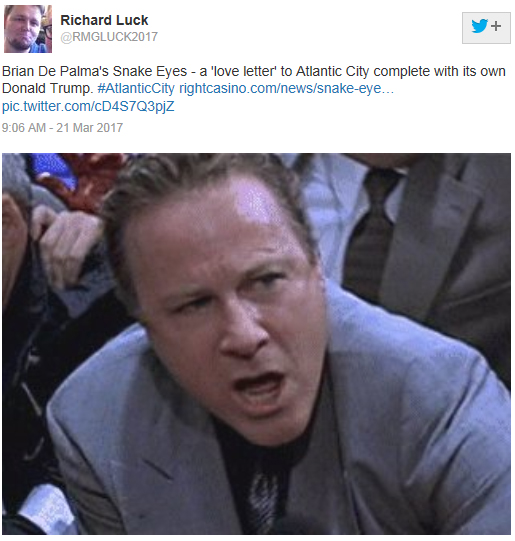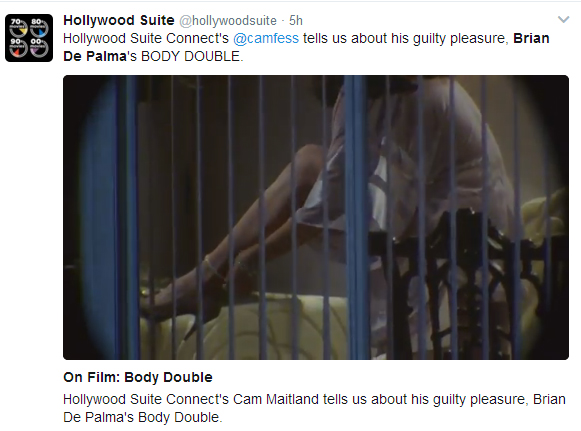ELEVATOR PITCH: "BLIND GIRL IN A HOUSE, SOME FOLKS BREAK IN, UNEXPECTED THINGS HAPPEN"
Yesterday's episode of The NYFA Hour Popcorn Talk podcast featured Lamont Magee and Jeff W. Byrd, the screenwriters for Brian De Palma's upcoming Lights Out. During the podcast, they briefly discussed the project with hosts Joelle Monique and Pegah Rad:
Joelle: You’re working on a movie that Brian De Palma is going to direct. Did you guys write it before Brian De Palma came on board?Jeff: Yes.
Joelle: Okay… Did it change at all when he came on board? How you approached the project? Or was it done and you were like, here Brian, let’s go?
Jeff: No, I mean, well, it’s still changing now, because he’s still, you know, transforming it and all that stuff. So, but the essence of it is pretty much what we wrote. But Lamont’s been really dealing with him directly, with the changes that were made most recently. But at the end of the day the essence will usually stay the same. Obviously, words may change, and situations may change, and things like that. When we wrote it, it was a little simple movie—two million dollar, little small thing.
Lamont: Right, it was like a million dollars. It was, like, small.
Jeff: Yeah, and then De Palma comes on board, and it’s like, what, forty or fifty or something… something insane. So it had to grow.
Lamont: But, there’s a funny story. I was working at Virgin Entertainment, and Jeff was just directing, you know, doing what he does. And we met at Marie Callender’s at the SAG offices on Wilshire, and we’d sat down and had lunch, and he was like, “I have this idea, we just need to do it ourselves.” And he pitched me what turned into Lights Out. And I was in. How long did it take us to write that?
Jeff: It was pretty short, actually. To be honest. What was it, like… six months?
Lamont: No… it was like, a couple months? Two, three months?
Jeff: It was fairly quick. It came out very swiftly.
Lamont: But with this guy’s vision of what he wanted—because he wanted a bare-bones action movie, with a female protagonist. I’m all in on that. And… yeah, it was fun.
Jeff: It’s going to be interesting to see what happens, what De Palma does with it, but…
Joelle: Can you guys give us your elevator pitch for the script?
Jeff: Um… could we? Let’s see, what was that…? [laughter] Well, you know what, if we do, I would have to preface it with this: it was way before what you’re going to think of. Okay? Way before.
Lamont: Right.
Jeff: Way before. Okay, so, the elevator pitch is: blind girl in a house, some folks break in, and…
Lamont: Shenanigans occur.
Jeff: Ensue. Yes—unexpected things happen, from that moment forward.









